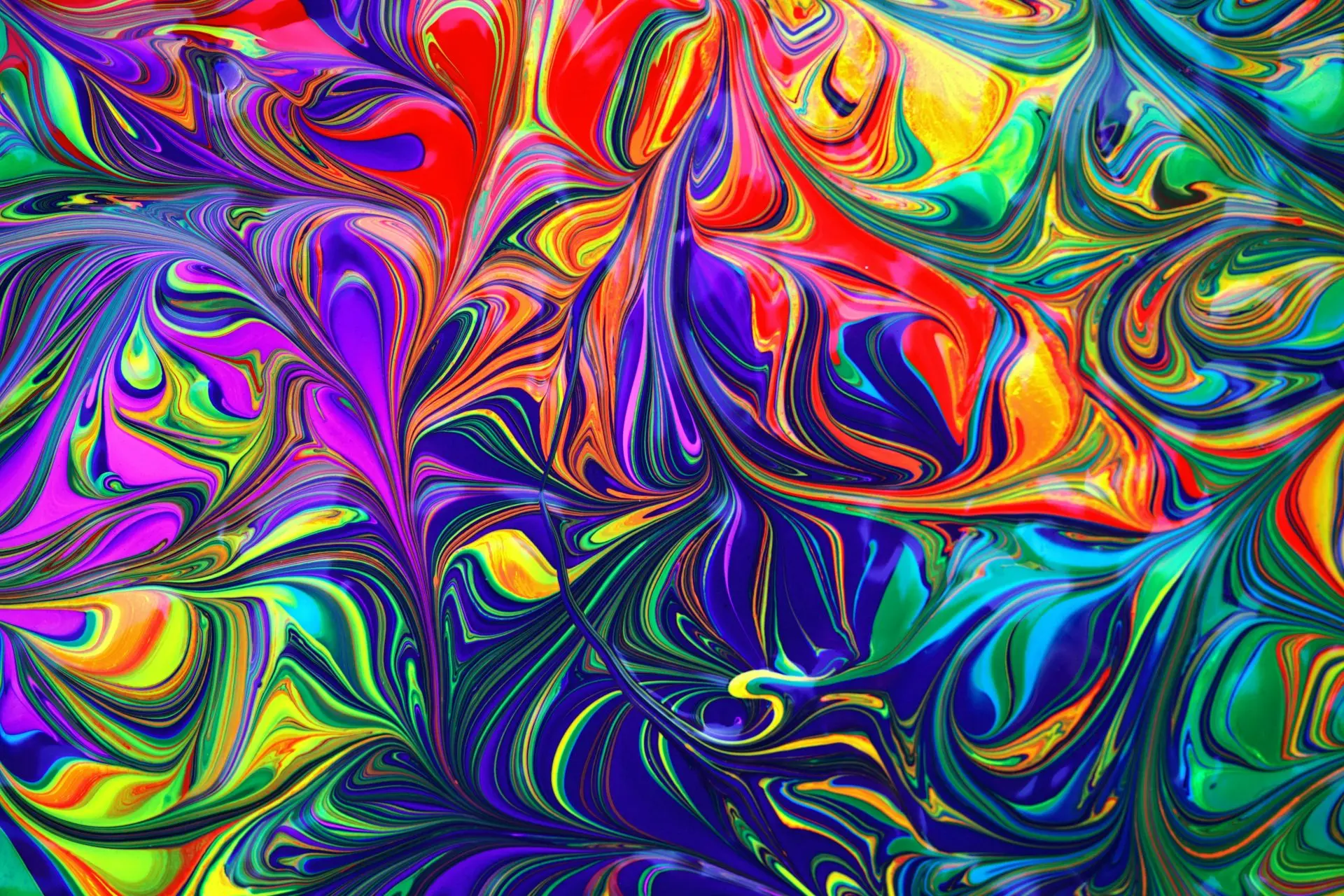Why Was the Harlem Renaissance So Significant?

Looking for more amazing products? Check out our online store and explore our collection here! Happy shopping!
Before diving in, please note: This post is for informational purposes only. If you’d like to know more about how we approach topics, feel free to check out our friendly Disclaimer Page.
Hey there, amazing readers! 
We’re committed to delivering quality posts, and your support (even just sticking around despite the ads) means everything to us. So, bear with us, and thanks for helping us keep the good vibes rolling. Now, on to the fun stuff!
TRANSLATE BUTTON AT THE END OF THE ARTICLE
A Quick Overview
The Harlem Renaissance was much more than just a cultural movement; it was a rebirth of African American art, music, literature, and identity in the early 20th century.
Emerging from the vibrant neighborhood of Harlem in New York City during the 1920s, this period marked an explosion of creativity and intellectualism among African Americans.
Artists, writers, musicians, and thinkers came together, pushing the boundaries of expression and challenging the racial stereotypes that had long plagued their community.
Why was this renaissance so significant?
Let’s dive into the nuances of this remarkable era!
The Harlem Renaissance: A Flourishing Cultural Movement
The Harlem Renaissance blossomed during a time when African Americans were grappling with Jim Crow laws and widespread racial discrimination.
The Great Migration, where millions moved from the rural South to northern urban centers, set the stage for cultural confluence in Harlem.
This community became a sanctuary where black people could explore their identity, share experiences, and express themselves freely.
This movement was characterized by a sense of unity and pride.
It was a time for African Americans to reclaim their narrative, shifting their portrayal from mere victims to vibrant contributors to American culture.
The arts became a vehicle for change, showcasing the complexities and richness of black life.
The Harlem Renaissance celebrated the beauty of blackness, and it reverberated through various forms of expression, from literature to visual arts.
Moreover, it wasn’t just about artistic output; it was also about intellectual dialogue.
Writers and thinkers like W.E.B.
Du Bois advocated for civil rights and social justice.
The "Talented Tenth," a concept Du Bois popularized, emphasized the importance of developing a leadership class within the African American community.
The impact of the Harlem Renaissance was felt far beyond the confines of Harlem.
It laid the groundwork for future civil rights movements and inspired generations of African American artists and activists.
By redefining cultural norms, the Harlem Renaissance left an indelible mark on the tapestry of American history.
Key Figures of the Harlem Renaissance Era
The Harlem Renaissance was filled with remarkable individuals who shaped its essence.
Let’s spotlight a few key figures whose influence still resonates today.
Langston Hughes: Often called the poet laureate of Harlem, Hughes captured the spirit of the African American experience through his powerful poetry and prose.
His work addressed themes of identity, resilience, and hope.
Zora Neale Hurston: A novelist and anthropologist, Hurston celebrated black culture and folklore.
Her novel "Their Eyes Were Watching God" remains a classic, offering a profound exploration of race, gender, and self-discovery.
Claude McKay: A poet and novelist, McKay’s works highlighted the struggles and triumphs of black life.
His poem "If We Must Die" became a rallying cry for resistance against oppression.
Duke Ellington: A jazz composer and bandleader, Ellington played a pivotal role in elevating jazz to an art form.
His innovative compositions brought new dimensions to music, making him a key figure in the movement.
Louis Armstrong: Widely regarded as one of the most influential jazz musicians, Armstrong’s unique trumpet playing and innovative improvisation changed the landscape of American music.
These luminaries, along with countless others, contributed their talents and perspectives, creating a rich tapestry of artistic expression that defined the Harlem Renaissance.
The Role of African American Artists and Writers
Artists and writers during the Harlem Renaissance played a crucial role in shaping a narrative that was often muted or misrepresented.
They became the storytellers of their people, utilizing their craft to share the African American experience authentically.
In literature, writers like Hughes and Hurston depicted everyday life and the struggles faced by black individuals.
Their works conveyed the joys and challenges of living as an African American in a society rife with discrimination.
Through storytelling, they fostered empathy and understanding.
Painters like Aaron Douglas used visual art to explore themes of African heritage and cultural pride.
His murals communicated stories of struggle and resilience, often merging African motifs with modernist styles.
The contributions of African American artists and writers were vital in establishing a cultural legacy.
They laid the groundwork for future generations, enabling artists to explore their identities more freely.
The resonance of their messages can still be felt today, as contemporary artists draw inspiration from their pioneering work.
Music: The Heartbeat of the Harlem Renaissance
When you think of the Harlem Renaissance, music undoubtedly plays a central role.
Jazz, blues, and gospel music were not just popular genres; they were lifelines for the community, expressions of pain, joy, and hope.
Jazz emerged as the defining sound of the Harlem Renaissance.
It represented freedom of expression and improvisation, elements that resonated with the African American experience.
The Cotton Club and the Apollo Theater became iconic venues, showcasing talented musicians and offering a space for black creativity to flourish.
Duke Ellington and Louis Armstrong brought jazz to new heights, blending various influences to create something entirely fresh.
Their music spoke to the heart of the struggles and triumphs of black life, with rhythms that could make anyone tap their feet and lyrics that told poignant stories.
Blues also played a significant role, with artists like Bessie Smith and Ma Rainey using their voices to articulate the pain of life.
Blues music often focused on the trials of love, loss, and hardship, offering both solace and catharsis for listeners.
The influence of this musical era extended beyond the confines of Harlem.
Jazz became a global phenomenon, infusing other cultures and genres with its spirit.
The melodies and improvisations laid the groundwork for future musical movements, making the Harlem Renaissance a cornerstone of modern music.
Literature: A New Voice for African American Experiences
Literature during the Harlem Renaissance was transformative.
Writers found ways to articulate their experiences, using words to shift public perception of African Americans.
Langston Hughes was a cornerstone of this literary movement.
His poems celebrated the black experience while also conveying the struggles of inequality.
Hughes believed in the power of art to incite change, writing with a voice that was both lyrical and accessible.
His work resonated with both the African American community and the broader American audience.
Zora Neale Hurston brought forth a distinct perspective.
Her rich narratives blended folklore with personal experience, creating a tapestry of Southern Black life.
Hurston’s explorations of gender and race added depth to the conversation about identity and self-empowerment.
Claude McKay’s poetry often reflected the realities of racial prejudice, but it also exuded a fierce pride in black identity.
His work encouraged readers to confront and challenge societal norms.
The literature of this era was characterized by a blend of realism and imagination.
Authors wrote about the everyday lives of black Americans, highlighting their joys, struggles, and aspirations.
This literary renaissance was not just an artistic movement; it was a voice for change.
Visual Arts: Vibrancy and Expression in Harlem
Visual artists during the Harlem Renaissance embraced their cultural heritage and used it as inspiration.
They created impactful art that reflected the complexities of African American life.
Aaron Douglas was a leading figure in this movement, often referred to as the "father of African American art." His work incorporated African motifs and themes of social justice, merging them with modernist styles.
Douglas’s pieces conveyed messages of resilience and hope, often addressing the struggles faced by black individuals.
Other artists, such as Archibald Motley, depicted vibrant scenes of urban life.
His work captured the energy of the Jazz Age, showcasing lively nightlife and the richness of black culture.
Motley’s use of color and form brought his subjects to life, engaging viewers in the narrative he portrayed.
The visual arts also provided a platform for political commentary.
Artists used their creations to address social justice issues and challenge the status quo.
They aimed to alter perceptions and promote a more nuanced understanding of African American experiences.
Through exhibitions and galleries, visual artists found an audience and recognition.
Their contributions enriched the cultural fabric of the Harlem Renaissance, creating a legacy of artistic excellence that continues to inspire.
Social Change: The Renaissance’s Impact on Society
The Harlem Renaissance was not just an artistic movement; it was a catalyst for social change.
It challenged perceptions, fought against racial stereotypes, and paved the way for future civil rights activism.
This period saw the emergence of various organizations advocating for African American rights.
The NAACP and the Urban League worked tirelessly to combat discrimination and promote equality.
The intellectuals and artists of the Harlem Renaissance contributed to these efforts, using their platforms to raise awareness and advocate for change.
The movement also played a crucial role in redefining black identity.
By celebrating their culture and contributions, African Americans began to take pride in their heritage.
This shift laid the groundwork for future generations to embrace their identity unapologetically.
Moreover, the Renaissance influenced mainstream society.
White audiences were introduced to African American culture through art, music, and literature.
This exposure fostered a greater understanding and appreciation of black life, though it was not without its complexities.
The social changes initiated by the Harlem Renaissance reverberated for decades.
It ignited a flame that inspired movements for civil rights, equality, and justice long after the jazz clubs of Harlem had quieted.
The Influence of Jazz on American Culture
Jazz music was a hallmark of the Harlem Renaissance, and its influence extends far beyond that era.
It revolutionized American music and helped shape various genres, including rock, blues, and hip-hop.
Jazz introduced a sense of improvisation and individuality that resonated with musicians and listeners alike.
Artists like Duke Ellington and Louis Armstrong became household names, showcasing the talent and creativity of African Americans to the world.
Their impact on music can still be felt today.
The popularity of jazz clubs in Harlem created spaces for cultural exchange.
Musicians from diverse backgrounds came together, blending influences and creating new sounds.
This melting pot of creativity fostered collaboration and innovation.
Jazz also played a role in breaking down racial barriers.
It crossed cultural lines, attracting audiences from different backgrounds.
In many ways, jazz became a unifying force, promoting understanding and appreciation for African American culture.
Today, jazz remains a vital aspect of American music.
Its legacy continues to inspire artists worldwide, reminding us of the beauty of creativity and the significance of cultural heritage.
Celebrating Black Identity and Heritage in Art
The Harlem Renaissance was a celebration of black identity and heritage.
Artists and writers sought to reclaim their narratives, moving away from the stereotypical portrayals that had dominated mainstream culture.
This celebration took many forms, from visual arts that depicted the beauty of African culture to literature that explored the complexities of black life.
Artists created work that reflected their experiences, fostering a sense of pride and belonging within the African American community.
The movement also emphasized the importance of African heritage.
Many artists drew inspiration from African art forms, incorporating traditional motifs and themes into their work.
This fusion of cultures enriched the artistic landscape and provided a deeper connection to their roots.
Through exhibitions, performances, and publications, the Renaissance showcased the richness of black culture.
It was a time for African Americans to express their individuality and share their stories with the world.
This celebration of identity continues to resonate today.
Contemporary artists and writers often draw upon the themes and messages of the Harlem Renaissance, honoring the legacy of those who came before them.
The Harlem Renaissance’s Legacy in Modern Culture
The legacy of the Harlem Renaissance is palpable in modern culture.
Its influence can be seen in literature, music, film, and the broader artistic landscape.
Contemporary authors like Ta-Nehisi Coates and Chimamanda Ngozi Adichie draw upon the themes of identity, race, and resilience explored by their Harlem Renaissance predecessors.
Their work continues the conversation about the African American experience in today’s society.
In music, genres like hip-hop and R&B echo the improvisational spirit of jazz.
Artists like Kendrick Lamar and Erykah Badu infuse their work with social commentary, connecting with the struggles and triumphs of their community.
Visual artists also pay homage to this vibrant era.
Many contemporary artists explore themes of race, identity, and social justice, echoing the messages of the Harlem Renaissance.
The art world continues to grapple with representation and inclusivity, a conversation that began decades ago.
The Harlem Renaissance serves as a reminder of the power of art to inspire change.
Its legacy encourages us to reflect on our history, celebrate our achievements, and strive for a more equitable future.
The Intersection of Politics and Art During This Era
During the Harlem Renaissance, art and politics intersected in profound ways.
Artists and writers often used their work as a platform for social change, addressing issues of race, equality, and justice.
Many artists felt a responsibility to speak out against injustice.
They created works that highlighted the struggles faced by the African American community, pushing back against stereotypes and advocating for civil rights.
This was not just an artistic movement; it was a fight for recognition and equality.
Writers like James Weldon Johnson and poets like Hughes often infused their work with political messages.
They used their voices to address systemic racism, advocating for a more just society.
Their art became a rallying cry for change, inspiring audiences to engage with the issues at hand.
Artistic gatherings, such as those held at the Abyssinian Baptist Church, served as platforms for discussing social issues.
These events brought artists and activists together, fostering dialogue and collaboration.
The intersection of politics and art during the Harlem Renaissance laid the groundwork for future movements.
It demonstrated the power of creativity to incite change and challenge societal norms.
Why the Harlem Renaissance Continues to Inspire Today
The Harlem Renaissance continues to inspire artists and thinkers today for many reasons.
Its focus on identity, resilience, and artistic expression resonates with contemporary audiences, reminding us of the importance of celebrating our heritage.
The movement serves as a testament to the power of art as a vehicle for change.
It encourages us to use our creative voices to address social injustices and advocate for equality.
The lessons learned during this era remain relevant in today’s conversations about race, identity, and representation.
Moreover, the Harlem Renaissance fostered a sense of community and collaboration.
Artists came together to support one another, creating a vibrant cultural landscape.
This spirit of togetherness is something we can all learn from, especially in an increasingly fragmented world.
Today, we see echoes of the Harlem Renaissance in various artistic expressions, from literature to music and visual arts.
Artists continue to explore themes of identity, culture, and social justice, paying homage to the legacy of those who paved the way.
The Harlem Renaissance reminds us that creativity knows no bounds.
It challenges us to engage with our history, celebrate our identities, and strive for a brighter future.
Conclusion
The Harlem Renaissance was an extraordinary cultural movement that reshaped the narrative of African American life in the early 20th century.
Through music, literature, visual arts, and political advocacy, it empowered artists to express their experiences authentically.
Its influence can still be felt in contemporary culture, reminding us of the importance of celebrating diversity and amplifying marginalized voices.
The legacy of the Harlem Renaissance is a powerful reminder of the capacity for art to inspire change and foster understanding across communities.
In a world still grappling with issues of race and identity, its messages continue to resonate, encouraging us all to embrace our stories and share our truths.

The Enlightenment Journey is a remarkable collection of writings authored by a distinguished group of experts in the fields of spirituality, new age, and esoteric knowledge.
This anthology features a diverse assembly of well-experienced authors who bring their profound insights and credible perspectives to the forefront.
Each contributor possesses a wealth of knowledge and wisdom, making them authorities in their respective domains.
Together, they offer readers a transformative journey into the realms of spiritual growth, self-discovery, and esoteric enlightenment.
The Enlightenment Journey is a testament to the collective expertise of these luminaries, providing readers with a rich tapestry of ideas and information to illuminate their spiritual path.
Our Diverse Expertise
While our primary focus is on spirituality and esotericism, we are equally passionate about exploring a wide range of other topics and niches 

To ensure we provide the most accurate and valuable insights, we collaborate with trusted experts in their respective domains 
Our blog originally focused on spirituality and metaphysics, but we’ve since expanded to cover a wide range of niches. Don’t worry—we continue to publish a lot of articles on spirituality! Frequently visit our blog to explore our diverse content and stay tuned for more insightful reads.
Hey there, amazing reader! 
Check out our store here and take a peek at some of our featured products below! Thanks for being awesome!










